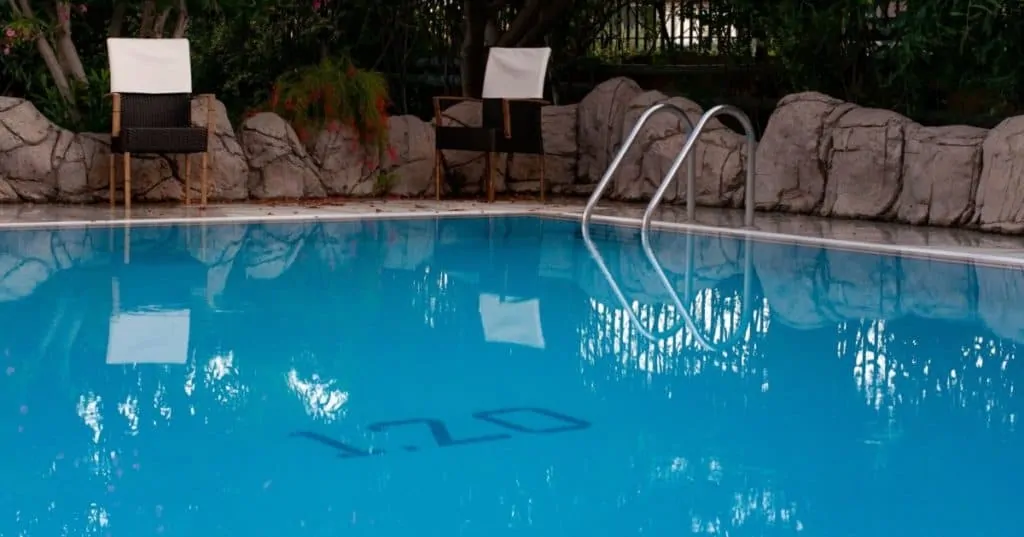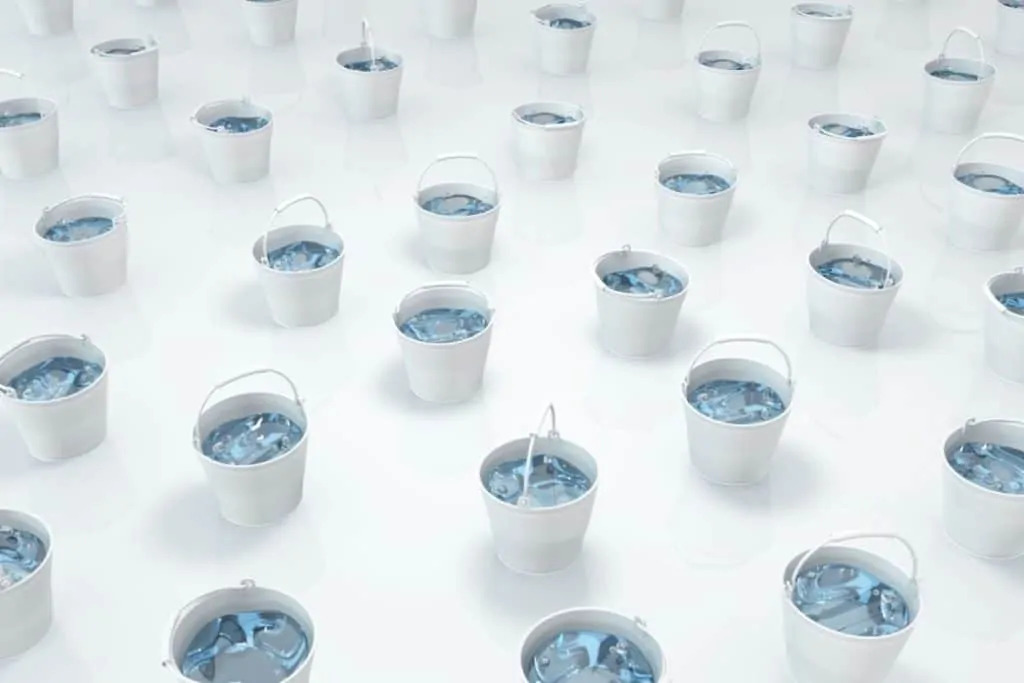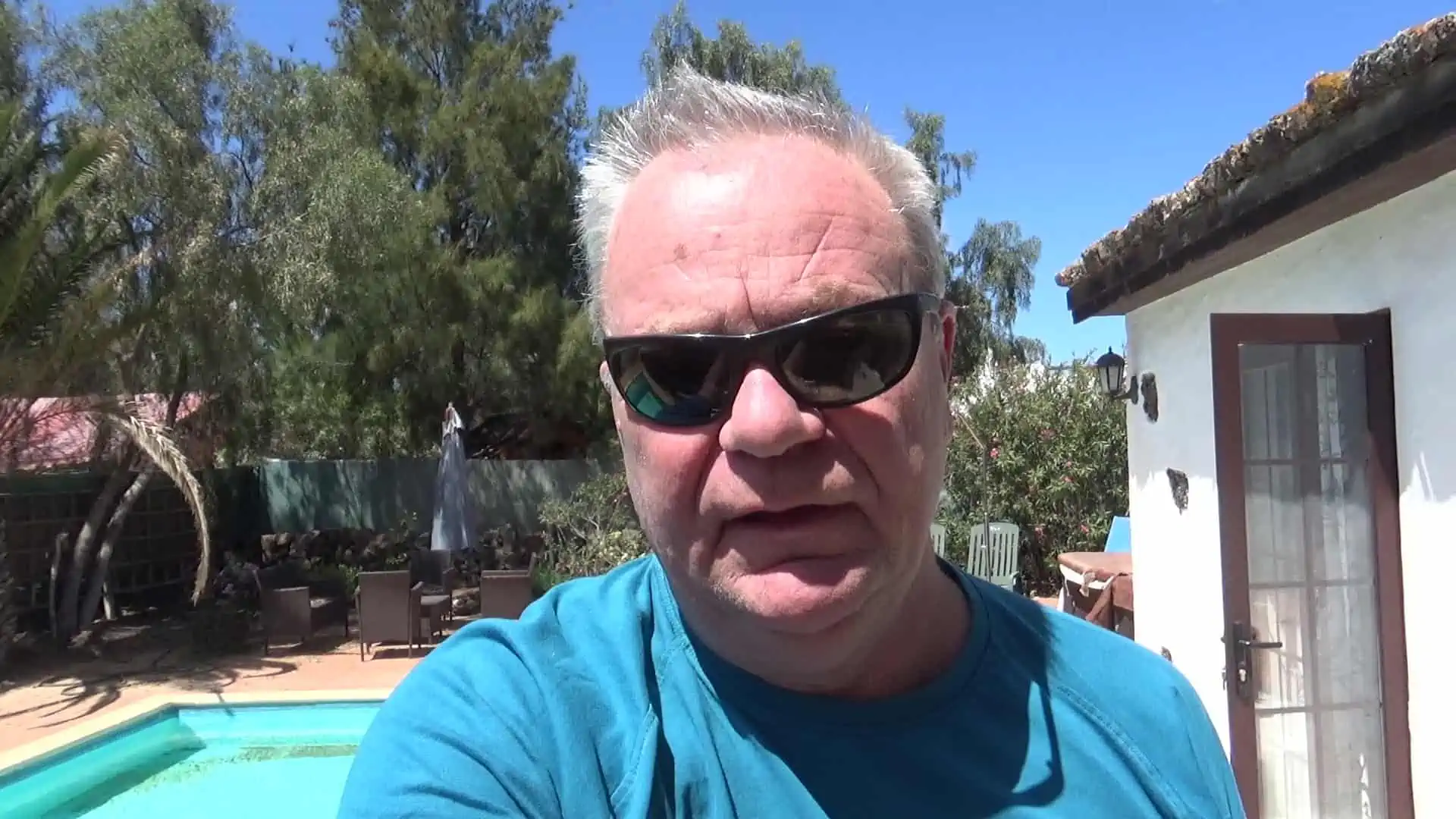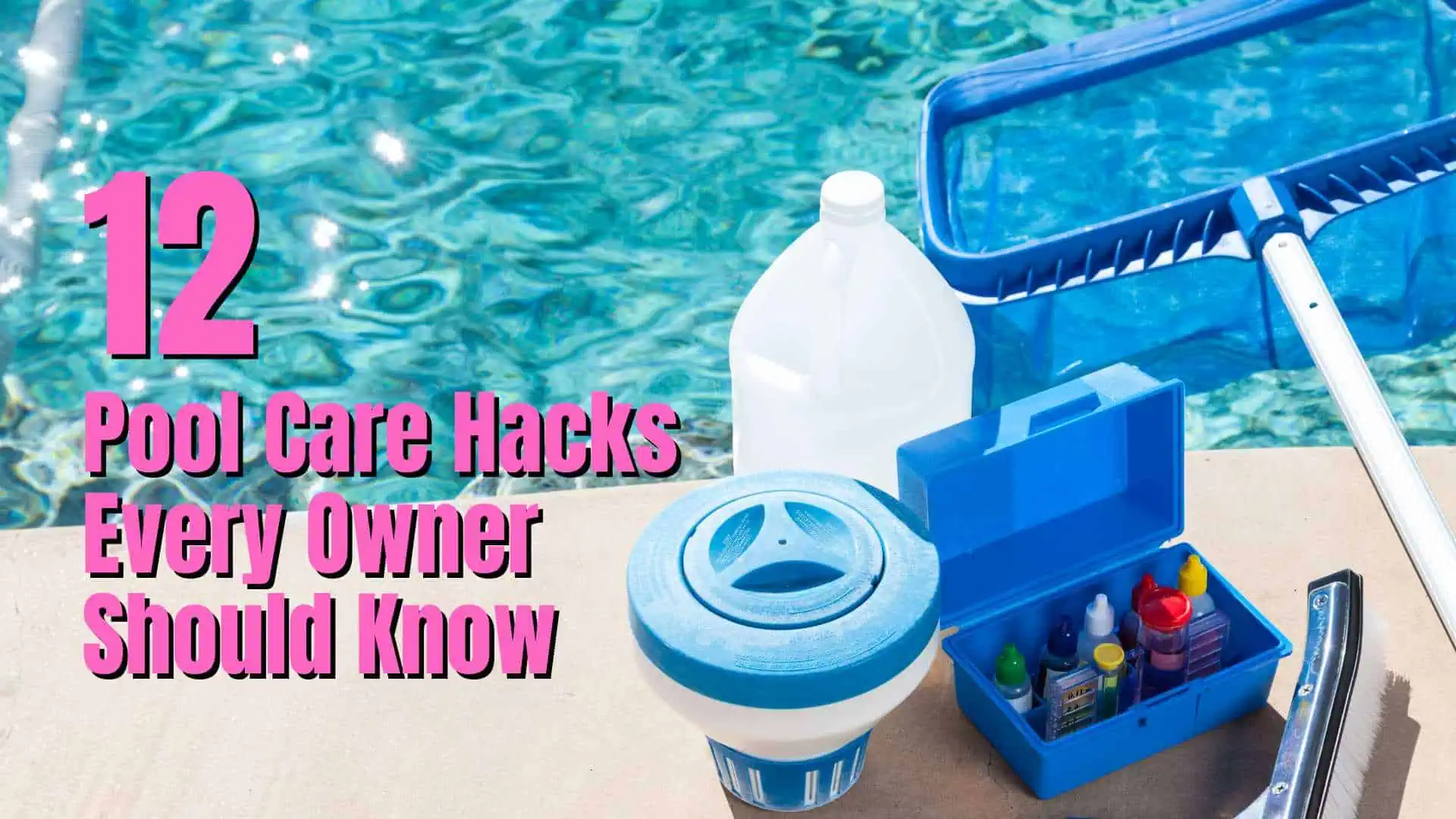It is surprising just how quickly a pool can become full, and even overflow, after a heavy downpour of rain. We get virtually no rain for much of the year where I live but when we do it really rains and my pool overflows.
To drain water from a pool after rain you will either have to:
- use the pool pump on the waste setting on the pool filter valve
- use a submersible pump
- siphon using a garden hose
- or even the very low tech solution of using a bucket
Even if the water level in your pool hasn’t reached the top of the pool and overflowed, if it has reached anywhere near the top of the pool skimmer entrances then you will need to drain some of it back to the correct level which is roughly halfway up the skimmer.

How to Drain a Pool Using the Pool Pump
How to drain a pool with a sand filter
This is without doubt the easiest method I know of how to let water out of pool if you have a sand filter and a multiport valve with a waste setting.
Step 1 – Run out backwash hose
Run out the backwash hose if you have one into the area you want the water to disperse. If your pool waste goes straight to your drainage system then this step is not necessary.
Step 2 – Multiport valve to drain or waste
Set the multiport valve to either the drain or the waste setting but make sure that you switch off the pump before you do this if it is running. (Never move the valve with the pump running as this can damage it)
If you have a valve that shuts off water to the waste pipe (I have one on my pool set-up) then make sure this is open.
Step 3 – Switch on the pool pump
Switch on the pool pump and then keep an eye on the water level. It should go down quite quickly so don’t go off and leave it running as if you get delayed you may come back to a half-empty pool.
Step 4 – Switch off the pool pump
When the water has reached its correct level, which would normally be approximately half way up the skimmer entrances, switch off the pool pump. Then put the multiport valve setting back to the filter position and turn the pump back on as normal.
How to drain a pool with a cartridge filter
Step 1 – Switch off the pump
Step 2 – Unscrew the drain plug
Look at the back of the filter near the bottom you will see the drain plug. Unscrew it completely and remove it.
Step 3 – switch the pump back on
Switch the pool pump back on. Water will then flow from the drain hole. Keep the pump on until the water has reached the level you want and turn off the pump.
Step 4 – Replace the drain plug
Screw the plug back into the drain hole.
Using a submersible pump
Using a submersible pump (also known as a utility pump) hooked up to a hose is the next quickest way to drain the water from your pool should you need to lower the water level after rain
Just connect your hose pipe to the pump, drop the pump into the pool (preferably into the deepest part) and switch on the power to the pump.
You can direct the other end of the hose to a convenient area of your yard or into a drain.
TIP: If you have a vinyl liner then make sure that you lower the pump to the bottom gently as if the pump has a sharp edge it could damage the liner.
You can buy a very effective submersible pump quite cheaply. The Wayne (US assembled) VIP50 is a very robust, non-clogging pump that will pump 1800 gallons per hour.
Many utility pumps have a floating switch that cuts the motor when the level drops to prevent the pump from running dry and burning out. You won’t need this feature when using a pump to lower the level of the pool after rain but it may be useful if you ever want to use it to empty your pool.
Once you have one you may find other uses for it too where this feature might be useful. Wayne also makes a Wayne 57729-WYN1 higher flow pump with an automatic cut-out when the level drops.
Using gravity (and a hose)
If you have an above-ground pool and need to drain some water then gravity is your friend. You can use a hose to siphon off some of the water, or all of it if it is perhaps at the top of a slope.
The best way I find to siphon water from a pool is:
- Place the end of the hose into the pool and then turn on the faucet.
- Keep it running until all the air is pushed out of the end by the water.
- Now turn off the faucet.
- Unscrew or pull off the hose and quickly place a finger over the end to prevent too much air from entering or water flowing out.
- Now take the end with your finger over it to wherever you intend to empty the water and lay it down. Note: This must be below the level that the other end of the hose is in the pool.
- The water should then start to flow out due to the siphoning effect.
- When the water reaches the desired level take the end of the hose out of the pool to stop the siphon.
Using a low-tech bucket

If all else fails you could use a bucket to drain water from a pool but I wouldn’t recommend it unless you are very fit and have lots of time on your hands.
It could take as many as almost 1000 buckets to reduce the water level in a 20ft x 40ft pool by 10 inches. That’s a lot of buckets!
Pool Care Handbook and Video Course
When I bought my house with a swimming pool, I knew absolutely nothing about pool care. I just winged it for a while, making many mistakes along the way.
Fortunately, I was recommended Swim University’s Pool Care Handbook and Video Course. I bought it and it was an absolute game-changer.
It was the best money I spent that year. I learned everything from basic cleaning to advanced troubleshooting. Swim University offers a no-quibble refund policy too so what do you have to lose?
Do you need to drain water after rain?
If you have only had a small amount of rain which has only raised the level by half an inch to an inch then you probably don’t need to drain your pool at all. The level will reduce with evaporation by itself.
However, if you have had sufficient rain to raise your pool water level to the top, or even above, the skimmer entrance/s then you definitely need to empty some of the water. With the water this high, the skimmers will not work so any debris that lands on the pool will either just float there or become waterlogged and sink to the bottom of the pool.
Can a swimming pool overflow when it rains?
A pool certainly can overflow if you have sufficient rain. The water must go somewhere so once it reaches the top of the pool it will just continue to flow out all over your paving, decking etc.
Sometimes pool builders will install a pool drain near the top of the pool to allow the excess water to flow away to a controlled area (drain, soak-away etc) which will stop it actually overflowing.
Should I shock my pool after it rains?
It is certainly not necessary to shock your pool after every time you have some rain. If that was the case then in some areas you would be shocking the pool many times a day.
Generally, it would only be necessary to shock the pool if you have had a significant amount of rain, particularly if it necessitated draining the excess water away.
Once you have shocked the pool and given it time to settle you should test the water and make any adjustments necessary.
Does rain dilute chlorine in pool?
Certainly, if your pool level increases significantly during heavy rain then that can affect the chlorine levels. But also rain can affect your pool chemistry in other ways:
Rain is often acidic so this can cause the pool’s water’s pH to go down (become more acidic). For the same reason, rainwater can also decrease the total alkalinity of the pool water.
Heavy rain may bring with it tiny debris particles in which case the chlorine levels will decrease as the chlorine is used up dealing with the debris.
Related articles
How to drain an inground pool below the skimmer
Should you run a pool pump when it rains?

I have had hot tubs for over 20 years and a pool for the last 10 years. I had to learn how to clean, maintain and fix them the hard way. Since then I have helped many friends and neighbors with their pools and now I want to share everything I have learned with you. About Me





